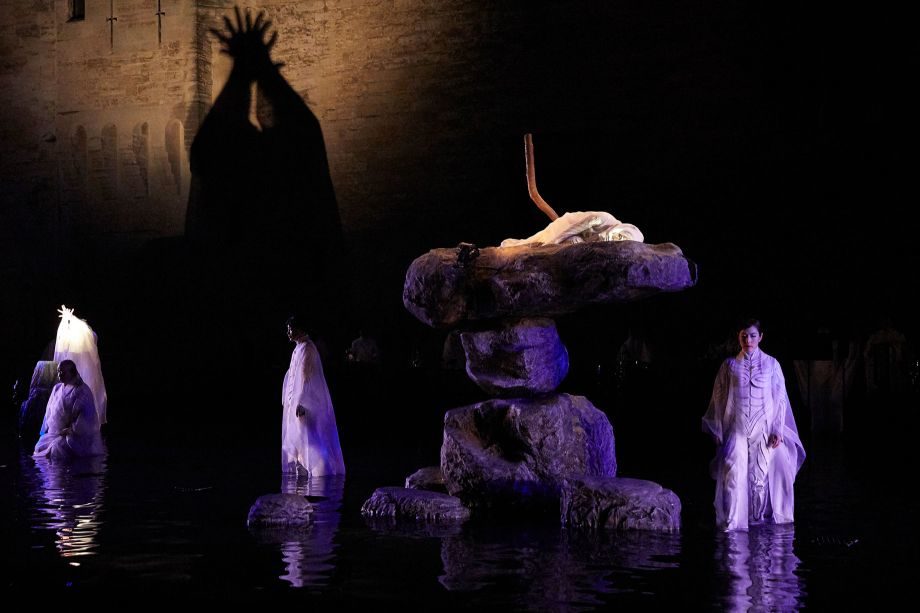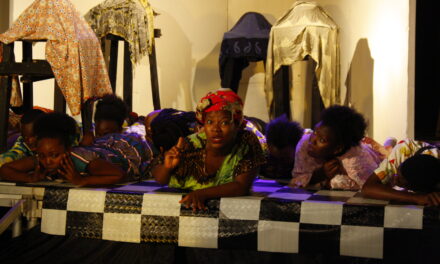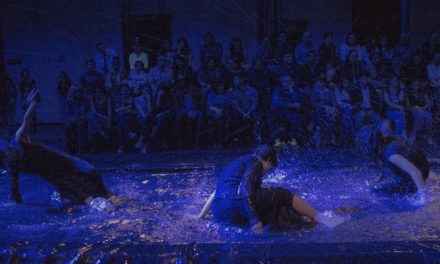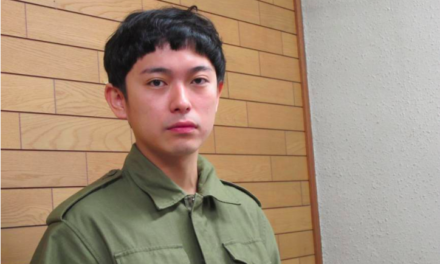Antigone by Sophocles, directed by Satoshi Miyagi; music by Hiroko Tanakawa; scenography by Junpei Kiz
Sophocles’ Antigone directed by Satoshi Miyagi and presented at the heart of the Avignon festival, in the Palais des papes, is one more example of a theatre as a symphony of pain.
Antigone – much like the other productions – is also a play about war, injustice, and suffering. It concerns the death of a young woman whose personal goal was to bury her brother and put his soul to rest. One of the foundational myths of Western consciousness, in Satoshi Miyagi’s theatrical universe, this Greek tragedy also links the traditions of Japanese Noh theatre and the philosophy of Buddhist monks.
Inspired by the enormous performance potential of the Palais des papes, Satoshi Miyagi explores the vertical as well as the horizontal dimension of that theatrical space. His scenographer Junpei Kiz has turned the stage into a magnificent pool of water, representing the Acheron, the river that divides the world of the living from the world of the dead. Enormous stones from Japan’s own river of death, the Sanzu, create a visual contrast to the stillness of the water, literally and metaphorically transforming Antigone’s fictional space of sand and desert into that of water and death. These images are also borrowed from the burial rituals of Buddhist monks. The presence of the chorus frames this staging where the singers represent the world of the dead, or senka in Japanese.
Upon entering the theatre, we see white figures slowly crossing over the water. They carry candles that stand for the souls of the dead thus suggesting that this Antigone is set in the realm of the dead, not the living. Satoshi Miyagi builds further on this association by using the devices of the wayang kulit, Indonesian shadow theatre, to evoke Sophocles’ characters, who, in this Japanese staging, become larger than life. Miyagi enlarges the actors’ bodies by turning them into their own shadows, projected on the walls of the Palais des papes. He also manipulates their voices by having the chorus leader speak the actors’ lines. This strategy not only creates a distancing effect but by separating the actors’ bodies from their voices, Miyagi also emphasizes the underlying condition of today’s universe: the world in which peoples’ egotistical desires take over the needs of the community, a world forever disconnected from the body and where personal experience undermines one’s sense of unity and belonging. Hence, by mixing the foundational principles of Greek tragedy, Japanese theatre and Indonesian shadow play, Miyagi negotiates the boundaries of intercultural encounter and creates a new theatrical universe of globalized experiences.
The final scene, invented specifically for this performance, shows all living beings leaving for the realm of Hades, including Creon and Tiresias. The sense of distance is complete as the actors take off their wigs and join the chorus of senka beings, the image that reminds us of our mortality, the condition that makes all living creatures equal.
Reposted with permission from CapitalCriticsCircle.com
This post was written by the author in their personal capacity.The opinions expressed in this article are the author’s own and do not reflect the view of The Theatre Times, their staff or collaborators.
This post was written by Yana Meerzon.
The views expressed here belong to the author and do not necessarily reflect our views and opinions.


















